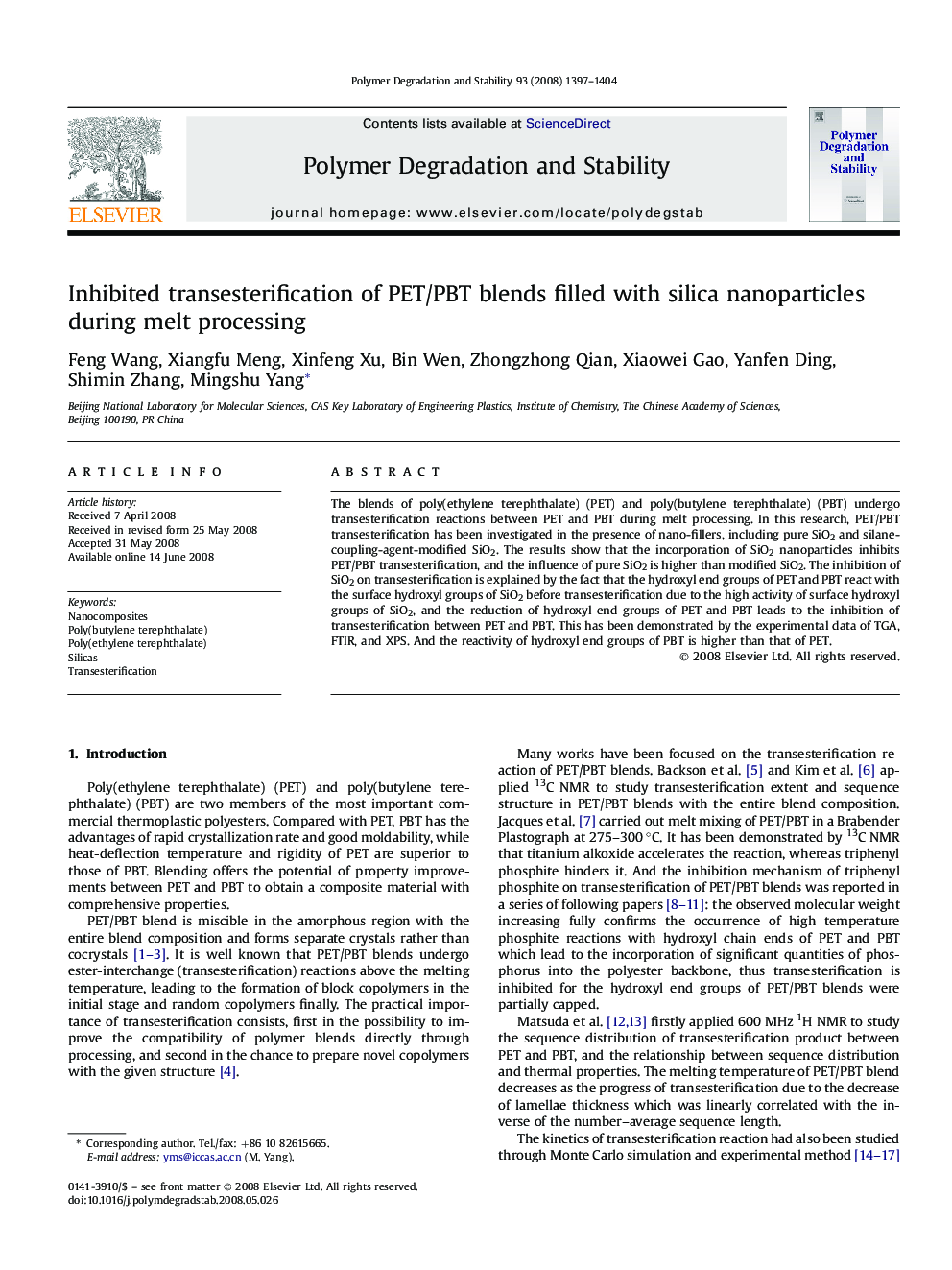| Article ID | Journal | Published Year | Pages | File Type |
|---|---|---|---|---|
| 5203714 | Polymer Degradation and Stability | 2008 | 8 Pages |
Abstract
The blends of poly(ethylene terephthalate) (PET) and poly(butylene terephthalate) (PBT) undergo transesterification reactions between PET and PBT during melt processing. In this research, PET/PBT transesterification has been investigated in the presence of nano-fillers, including pure SiO2 and silane-coupling-agent-modified SiO2. The results show that the incorporation of SiO2 nanoparticles inhibits PET/PBT transesterification, and the influence of pure SiO2 is higher than modified SiO2. The inhibition of SiO2 on transesterification is explained by the fact that the hydroxyl end groups of PET and PBT react with the surface hydroxyl groups of SiO2 before transesterification due to the high activity of surface hydroxyl groups of SiO2, and the reduction of hydroxyl end groups of PET and PBT leads to the inhibition of transesterification between PET and PBT. This has been demonstrated by the experimental data of TGA, FTIR, and XPS. And the reactivity of hydroxyl end groups of PBT is higher than that of PET.
Keywords
Related Topics
Physical Sciences and Engineering
Chemistry
Organic Chemistry
Authors
Feng Wang, Xiangfu Meng, Xinfeng Xu, Bin Wen, Zhongzhong Qian, Xiaowei Gao, Yanfen Ding, Shimin Zhang, Mingshu Yang,
